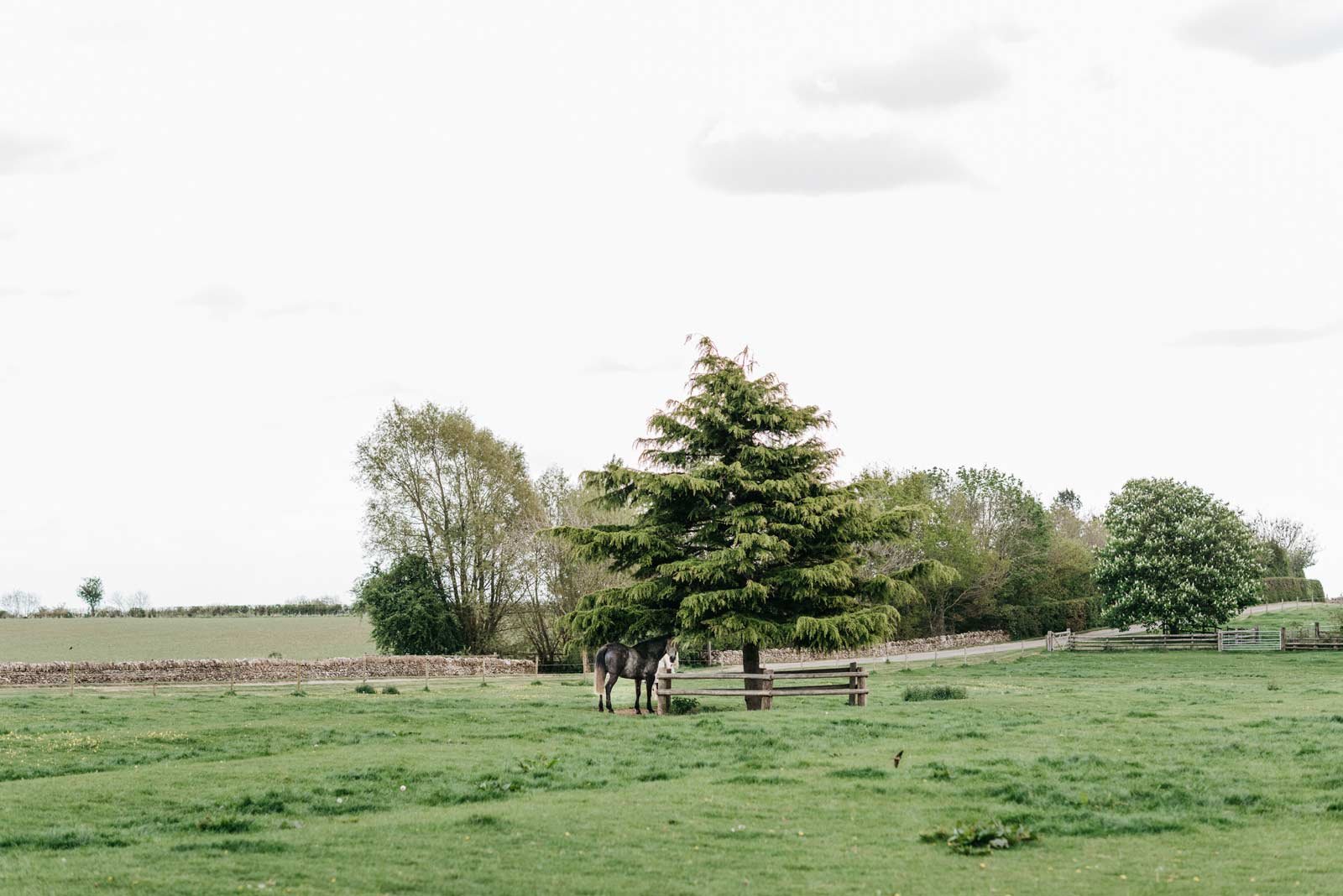
Farming
Oxleaze and Bradborough Farms are on the Gloucestershire/Oxfordshire border. Jock and Margaret Mann moved here in 1949, later handing the reins to their younger son, Charles and his wife Chipps in 1982. Now Will and Katie, two of their children, are active partners in the business.
During that time Oxleaze has experienced its own mini transformation. Having contributed to the ‘green revolution’ of the 1980s, in hindsight an ill-chosen term, when farmers were encouraged to produce large quantities of cheap food. Knowing no better we enthusiastically sprinkled on the fertilisers and pesticides that allowed even our stoney Cotswold brash soils to produce valuable quantities of wheat, barley and oilseed rape. At this time livestock became too costly to manage with rising wages, so monocultures of crops became common practice across the lowlands of England.
By the mid-90s we began to comprehend the damage that we had been doing to the biodiversity of the environment. The government introduced measures to help fund conservation projects to address this and introduced the practice of set-a-side. This was a trigger to really analyse our business model, the outcome of which was to start the transition to organic, reduce both machinery and labour and approach farming in a much more holistic and sustainable way.
Today, most of the farm is grassland, including 50 acres of flower-rich grassland established 17 years ago, 135 acres of unimproved pasture and 50 acres of traditional water meadows. It is extensively grazed by a traditional suckler herd of 70 Aberdeen Angus, both organic and 100% pasture-fed, aiding carbon sequestration and increasing the level of Omega 3 in the beef. Stores and finished animals are sold locally through Daylesford Farm Shop.
As from 2021 there has been no ploughing carried out on the farm to keep the carbon locked up.
We have planted 30,000 trees and 26,000 hedging plants that contribute to the 75 acres of woodland are actively managed to produce cricket bat willows, firewood and woodchip to fuel the onsite biomass burner. This provides heat for 11 properties on the farm to include both residential, commercial units and a wedding venue with accommodation. Power is also generated onsite from a solar PV array of 270 Kw which supplies 24 properties.
Having converted to organic in 2007 we have progressively increased our involvement with conservation measures, working with the likes of the Wildlife Trusts and Farming and Wildlife Advisory Group (FWAG) as well as Natural England to begin to rebuild our connection with nature.
Having been fully certified organic for 18 years we have been in the Countryside Stewardship Higher Tier since their inception. We are currently in a fire-year Mid-Tier programme and Phase 1 Pilots for the new Environmental Land Management Scheme.
As a result of the way we manage and farm, supported by these schemes and the interconnection between them, we are seeing a fantastic revival of the flora, fauna, wildlife and soil that are the foundation for the biodiversity that makes England’s countryside so spectacular. A recent RSPB survey found that we had the highest density of linnets recorded in the UK.
There are now over 50 people earning their living off the farm or living onsite. This thriving rural community is testament that productivity can live alongside sustainability and we look forward to a future where this is the norm rather than a rarity.








